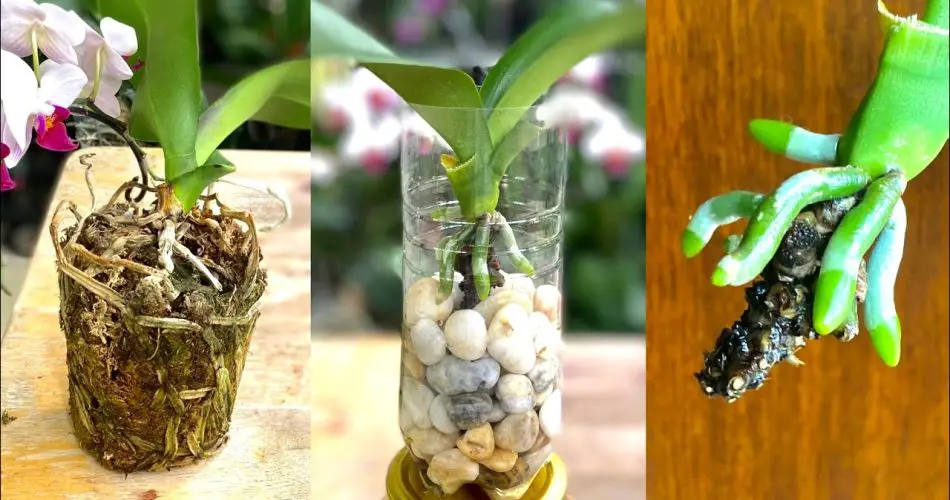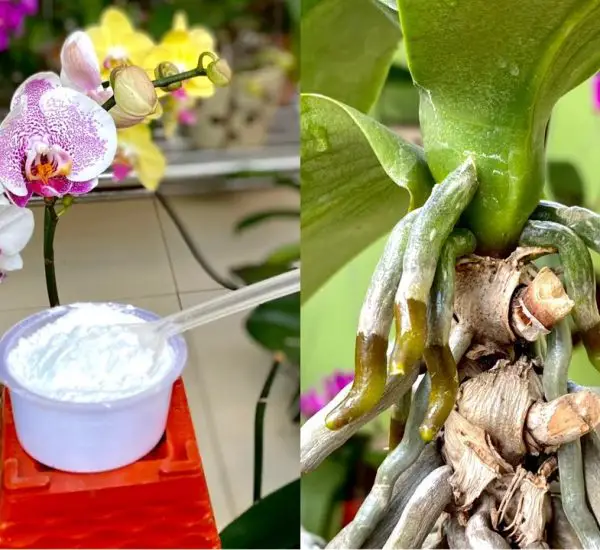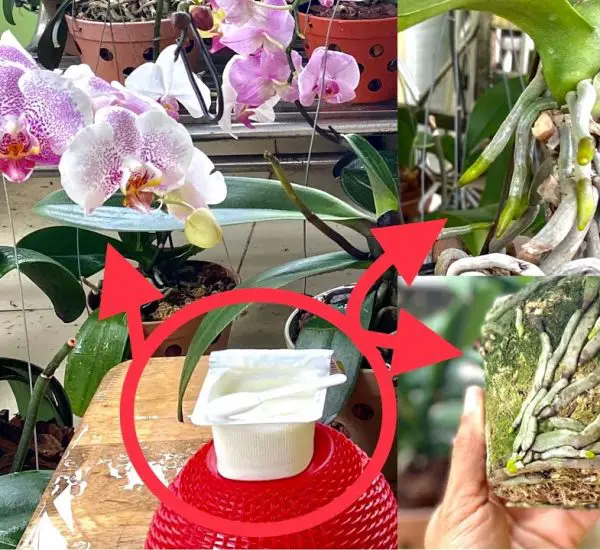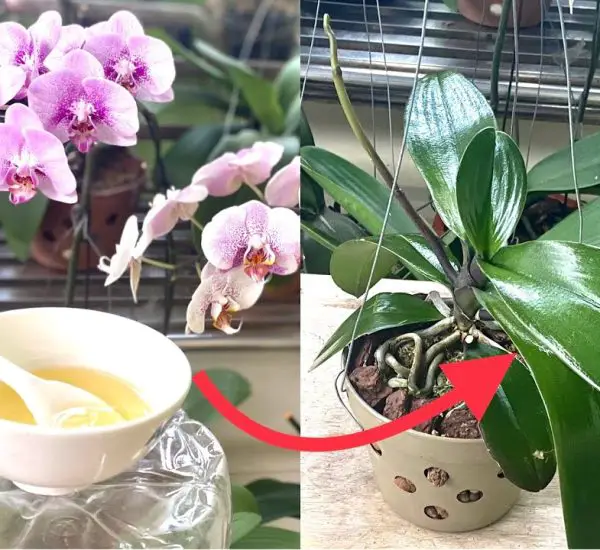Removing Damaged Roots and Leaves:
Upon discovering that the orchid roots are extensively damaged, it’s crucial not to lose hope. The first step involves carefully removing all old planting materials and cutting off the damaged roots. Even though some roots may appear weak, retaining those with a healthy core is advisable. Additionally, removing leaves and using Hydrogen Peroxide (3% or 6%) for disinfection ensures a clean slate for recovery.
Utilizing Plastic Bottles for Stabilization:
To aid in the recovery process, repurposing plastic bottles can be a practical solution. Place a few clay pellets in the bottle, creating a stable environment for the orchid to root. Adding water to the bottle allows the stump to make contact with moisture. However, it’s essential to maintain a balanced water level, avoiding over-flooding, which can lead to rot. Placing the setup in a cool, well-ventilated area with sufficient light facilitates a quick recovery.
Observing Rapid Root Growth:
Implementing this method has shown promising results in terms of rapid root growth. Within about a month, the orchid’s roots demonstrate significant development. The water level, strategically maintained to provide adequate moisture without excess, fosters a conducive environment for root recovery. This simple yet effective technique ensures that even orchids without visible roots can rejuvenate and establish a healthy root system.
Transplanting and Continued Care:
Once the orchid has sufficiently recovered with healthy roots, the next step involves transplanting it into a new pot. Using terracotta or expanded clay pellets as planting material ensures optimal moisture retention. Carefully watering the plant and placing it in a cool, sunlit location further supports the orchid’s adaptation to its new environment. Over time, the leaves, though initially wrinkled, regain strength and vitality, signaling a successful recovery.
Recovering orchids with rotted roots might seem challenging, but with a systematic approach involving root and leaf removal, disinfection, stabilization using plastic bottles, and careful observation of root growth, enthusiasts can revive these resilient plants. The subsequent transplanting and continued care contribute to the orchid’s overall health and longevity.



